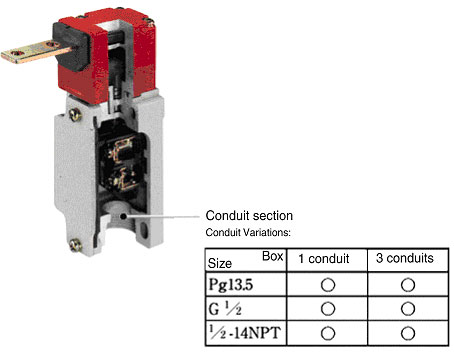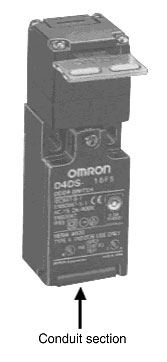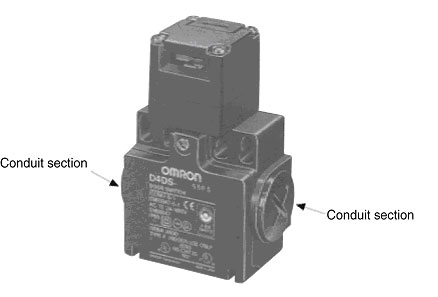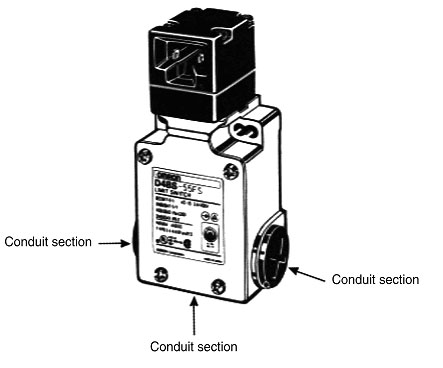What is the conduit section?
The duct openings and wiring openings in Safety Door Switches and Safety Limit Switches are called the conduit sections and this is where the wiring section is sealed.
Refer to the following photographs of structural cross-sections of a D4BS-series Switch.
In the conduit size column in the catalogs, Pg13.5 and M20 are European specifications, G1/2 is the Japanese specification, and 1/2-14NPT is the North American specification.
Example: The conduit section and sizes for the conduit section for D4BS Safety Door Switches are shown below.

Difference between One-conduit, Two-conduit, and Three-conduit Models
One-conduit models have one conduit section on the switch.
Two-conduit models have two conduit sections on the switch
Three-conduit models have three conduit sections on the switch.
One-conduit Model
Example: D4DS-15FS

Two-conduit Model
Example: D4DS-55FS

Three-conduit Model
Example: D4BS-55FS
